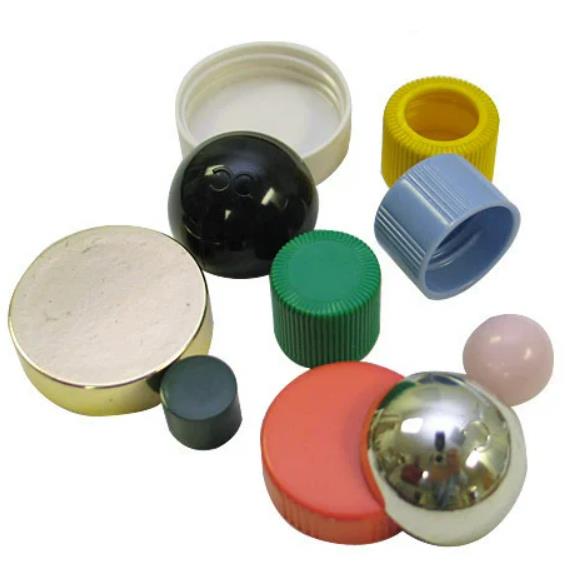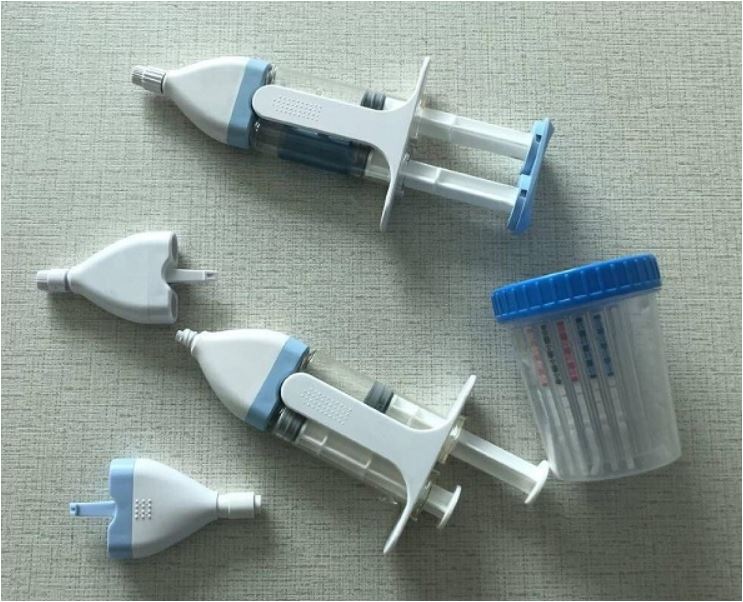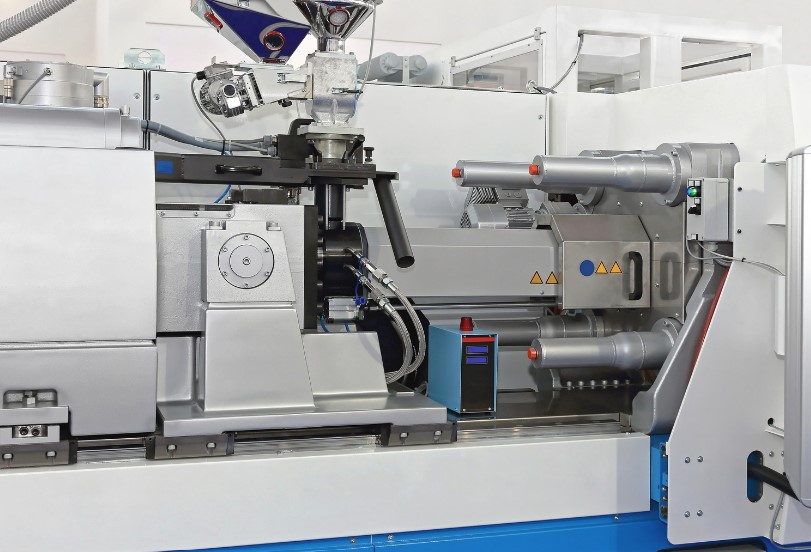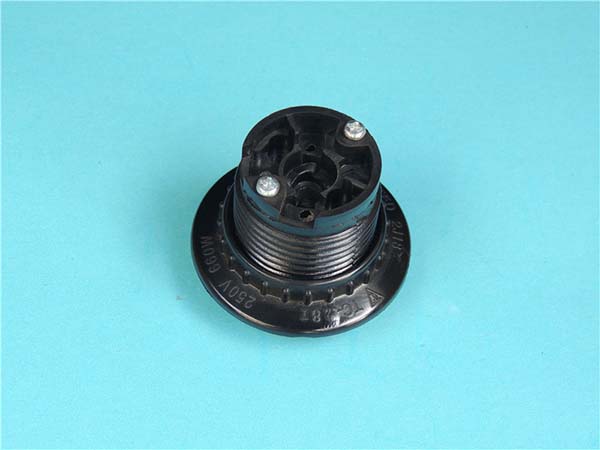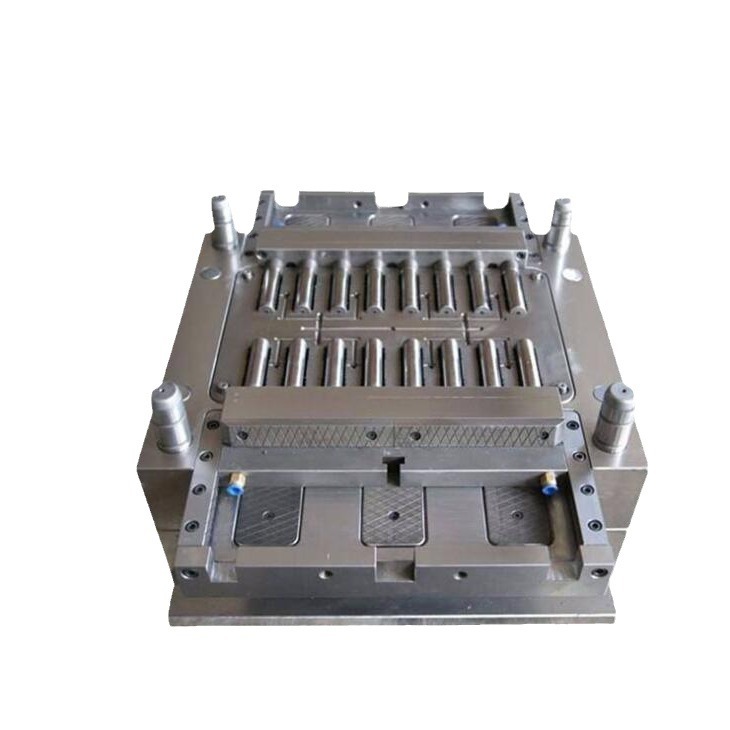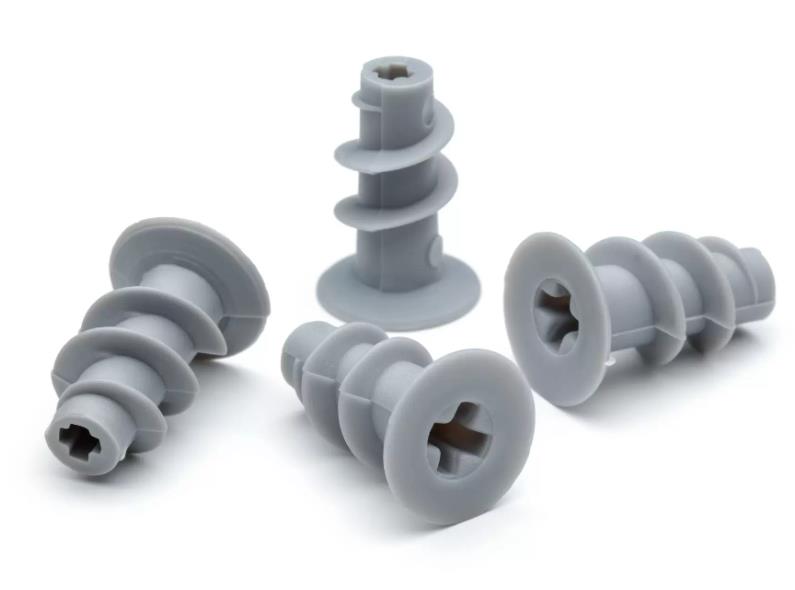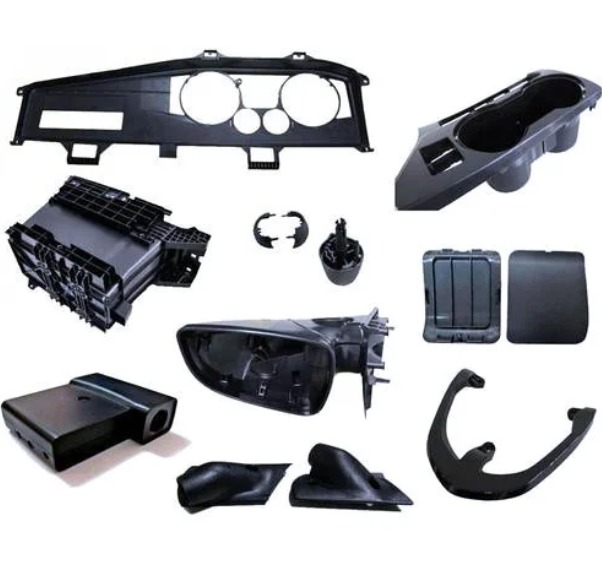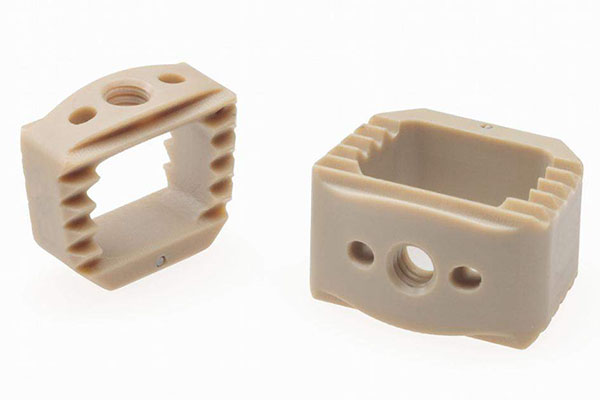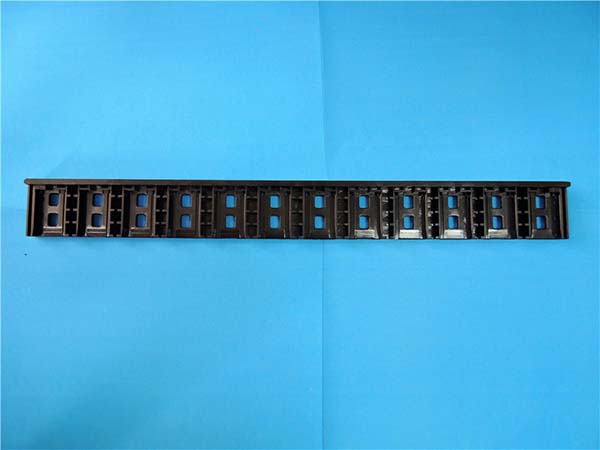1. Introduction
1.1 What is Over Molding
Over Molding, also known as double shot molding or two - shot molding, is a revolutionary plastic - processing technique that has been driving transformative innovation in the plastics industry. In essence, over molding is a process where two or more different materials, typically plastics, are combined in a single manufacturing operation to create a single, integrated part.
The basic principle involves first creating a base part, known as the substrate. This substrate can be made from a wide range of materials, such as rigid plastics like acrylonitrile - butadiene - styrene (ABS), polycarbonate (PC), or polyethylene (PE). Once the substrate is formed, usually through injection molding, it is then placed into a second mold. In this second mold, a second material, often a softer or more flexible plastic such as thermoplastic elastomer (TPE) or silicone, is injected over the substrate. This second material adheres to the substrate, creating a composite part with unique properties.
For Yigu Technology example, think of a power tool grip. The inner core of the grip, which provides structural integrity, is made from a rigid plastic. Then, a layer of soft TPE is over - molded onto the outer surface of the core. This TPE layer offers a better grip, shock absorption, and enhanced user comfort. Another common example is in the production of mobile phone cases. The main body of the case, made from a hard plastic for protection, has a soft, rubber - like TPE over - molded around the edges. This not only provides better drop protection but also gives a more tactile and non - slip surface for the user.
The over molding process can be further classified based on the way the two materials are combined. One - shot over molding involves both materials being injected into the mold in a single operation, but at different times or through different injection points. Two - shot over molding, on the other hand, requires the substrate to be fully formed in one mold and then transferred to a second mold for the over - molding material to be added. Each method has its own advantages and is chosen based on factors such as the complexity of the part, production volume, and material compatibility.
2. The Mechanics of Over Molding
2.1 Process Breakdown
The over molding process is a multi - step operation that requires precision and careful planning.
- Substrate Creation:
- Mold Preparation: First, the mold for the substrate is prepared. This mold is designed to create the basic shape of the part. For Yigu Technology example, if we are making a tool handle, the mold for the substrate will be shaped like the inner core of the handle. The mold cavities are carefully machined to ensure the desired dimensions and surface finish of the substrate.
- Injection of Substrate Material: Once the mold is ready, the selected substrate material, such as a rigid plastic like ABS, is melted and injected into the mold cavities using an injection molding machine. The injection pressure and temperature are carefully controlled. For ABS, the injection temperature typically ranges from 200 - 270°C. High - pressure injection ensures that the molten plastic fills all the intricate details of the mold. After injection, the plastic is allowed to cool and solidify within the mold. Cooling times can vary depending on the thickness and size of the part, but generally, it takes a few seconds to a few minutes. Once solidified, the substrate is ejected from the mold.
- Over - molding:
- Mold Transfer: The formed substrate is then transferred to the over - molding mold. This mold is designed to add the over - molding material in the desired areas. In some cases, the substrate may need to be precisely aligned in the over - molding mold using fixtures or alignment pins to ensure accurate placement of the over - molding material.
- Injection of Over - molding Material: The over - molding material, like TPE, is then melted and injected into the over - molding mold. The TPE is injected in such a way that it adheres to the surface of the substrate. The injection parameters for TPE are different from those of the substrate material. For TPE, the injection temperature is usually lower, around 150 - 200°C. The TPE fills the spaces around the substrate, creating a seamless bond. After injection, the part is again allowed to cool and solidify. The cooling process helps to set the shape of the over - molded part and strengthen the bond between the two materials. Once cooled, the final over - molded part is ejected from the mold, ready for post - processing if required.
2.2 Key Equipment and Materials
- Key Equipment:
- Injection Molding Machines: These are the workhorses of the over molding process. They are responsible for melting the plastic materials and injecting them into the molds. Injection molding machines come in various sizes and capabilities. A small - scale injection molding machine may have a clamping force of a few tons, suitable for producing small, simple over - molded parts. For large - scale production of complex parts, such as automotive components, injection molding machines with clamping forces of several hundred tons are used. They also have advanced control systems that can precisely regulate injection speed, pressure, and temperature.
- Molds: There are two types of molds involved in over molding - the mold for the substrate and the over - molding mold. These molds are typically made of steel or aluminum. Steel molds are more durable and can withstand high - pressure injection, making them suitable for high - volume production. Aluminum molds, on the other hand, are lighter and have better heat transfer properties, which can reduce the cooling time of the plastic parts, but they may not be as long - lasting as steel molds.
- Common Materials:
- Substrate Materials:
- ABS (Acrylonitrile - Butadiene - Styrene): ABS is a popular choice for the substrate due to its excellent mechanical properties, including high impact resistance, good dimensional stability, and easy processability. It is often used in consumer electronics, such as the main bodies of smartphones and tablets.
- PC (Polycarbonate): PC offers high strength, heat resistance, and optical clarity. It is commonly used in applications where high - temperature resistance is required, like in automotive lighting components or power tool housings.
- Over - molding Materials:
- TPE (Thermoplastic Elastomer): TPE combines the properties of rubber and plastic. It is soft, flexible, and has good elasticity, making it ideal for applications where a non - slip grip or shock - absorbing properties are needed, such as in the handles of kitchen utensils or sports equipment.
- TPR (Thermoplastic Rubber): Similar to TPE, TPR also provides a soft and rubber - like feel. It is often used in applications where cost - effectiveness is a key factor, such as in the production of children's toys or low - cost consumer goods.
3. Over Molding vs Traditional Molding Methods
3.1 Cost Comparison
When it comes to cost, over molding and traditional molding methods have distinct differences. Here is a detailed cost comparison in a tabular format:
| Cost Aspect | Over Molding | Traditional Molding (e.g., Single - Shot Injection Molding) |
| Mold Cost | Higher initial investment. Since over molding often requires two sets of molds (one for the substrate and one for the over - molding material), the mold manufacturing cost is increased. For example, in a small - scale production of consumer electronics components, the mold cost for over molding can be 30 - 50% higher than that of single - shot injection molding. | Lower initial mold cost as only one mold is needed for the entire part production. |
| Material Cost | May be higher in some cases. Using two different materials means more material consumption. However, in applications where the over - molding material provides added functionality, such as improved grip or shock absorption, it can eliminate the need for additional post - processing steps or components, potentially saving costs in the long run. | Lower material cost in terms of the number of materials used, but may require additional materials for post - processing to achieve the same functionality as an over - molded part. |
| Production Efficiency Cost | Can be more efficient in high - volume production. Once the setup is optimized, over molding can produce parts with complex geometries and multiple functions in a single operation, reducing cycle times. For instance, in automotive interior component production, over - molded parts can be produced in a cycle time that is 20 - 30% shorter than the combined time of traditional molding and post - processing steps for equivalent parts. | In some cases, traditional molding may require multiple operations and longer production times, especially if additional features need to be added through post - processing. |
3.2 Quality and Durability
- Structural Strength:
- Over - molded parts often have superior structural strength. The combination of a rigid substrate and a flexible over - molding material creates a composite structure. For Yigu Technology example, in the production of power tools, the rigid plastic substrate provides the main structural support, while the over - molded TPE layer not only enhances the grip but also acts as a shock - absorber. This combination reduces the risk of the part cracking or breaking under stress, making it more durable compared to a single - material part produced by traditional molding methods.
- Wear Resistance:
- The over - molding material, especially materials like TPE or silicone, can significantly improve the wear resistance of the final product. In applications such as the handles of kitchen utensils, the soft TPE over - molding layer protects the underlying substrate from scratches and abrasions during daily use. Traditional molding methods, if they produce a single - material handle, may have a higher rate of wear and tear over time, leading to a shorter product lifespan.
- Environmental Resistance:
- Over - molded parts can be designed to have better environmental resistance. For Yigu Technology example, in outdoor applications, the over - molding material can be chosen to be UV - resistant. A plastic housing for outdoor electrical equipment with an over - molded UV - resistant layer will have a longer lifespan compared to a traditionally molded single - material housing, which may degrade more quickly when exposed to sunlight.
5. Real - World Applications
5.1 Consumer Electronics
Over molding has found extensive applications in the consumer electronics industry, revolutionizing both the performance and aesthetics of various devices.
- Mobile Phones: In mobile phone manufacturing, over molding is commonly used for the phone cases and some internal components. The main body of a phone case, usually made of a hard and durable plastic like polycarbonate (PC) for protection against impacts, has a soft TPE over - molded around the edges. This soft TPE layer not only provides enhanced shock absorption, reducing the risk of damage from drops, but also offers a non - slip grip, making it more comfortable and secure to hold. According to a study by a leading market research firm, smartphones with over - molded cases have shown a 30% lower rate of damage from accidental drops compared to those with traditional single - material cases.
- Headphones: For headphones, over molding is applied to parts such as earpads and headbands. Earpads made of a combination of a rigid inner structure (substrate) and a soft, over - molded silicone or TPE outer layer provide better comfort during long - term use. The soft over - molding material conforms to the shape of the ear, reducing pressure points and enhancing the overall user experience. In addition, the headbands of some high - end headphones often use over molding to add a layer of soft material over a rigid frame. This not only improves the comfort but also gives the headphones a more premium look and feel, which can significantly impact consumer perception and brand value.
5.2 Automotive Industry
The automotive industry has also embraced over molding technology due to its numerous advantages.
- Interior Components: Many automotive interior components benefit from over molding. For Yigu Technology example, the steering wheels in modern cars often have an over - molded soft TPE or silicone layer over a rigid plastic or metal core. This soft layer provides a better grip for the driver, reducing the chance of slippage, especially in high - stress driving situations. It also adds an element of luxury and comfort to the driving experience. A survey of car owners found that 85% of them preferred cars with over - molded steering wheels in terms of both comfort and safety. Additionally, door handles, gear shifters, and dashboard trim pieces are often over - molded. The over - molding material can be chosen to match the overall interior design theme of the car, enhancing its aesthetic appeal.
- Sealing Components: Over molding is crucial for automotive sealing components. Rubber - like materials such as EPDM (Ethylene - Propylene - Diene Monomer) are often over - molded onto plastic or metal substrates to create highly effective seals. These seals are used around windows, doors, and in engine compartments. They provide excellent weatherproofing, reducing noise, water, and dust ingress into the vehicle. A well - designed over - molded seal can improve the acoustic performance of a car by up to 10 decibels, creating a quieter and more comfortable driving environment. Moreover, the durability of these over - molded seals is significantly higher than that of traditional single - material seals, reducing the need for frequent replacements and contributing to the overall reliability of the vehicle.
8. Conclusion
Over molding has emerged as a game - changer in the plastic industry, driving transformative innovation in multiple ways. It offers a unique combination of materials, resulting in parts with enhanced functionality, improved quality, and extended durability. The ability to create parts with complex geometries and multiple functions in a single operation not only streamlines the manufacturing process but also opens up new possibilities for product design.
In terms of cost - effectiveness, while over molding may have a higher initial investment in molds and materials, its long - term benefits in terms of production efficiency and reduced post - processing requirements often outweigh the upfront costs, especially in high - volume production scenarios.
The real - world applications of over molding in industries such as consumer electronics and automotive demonstrate its versatility and value. In consumer electronics, it has improved the user experience by enhancing product aesthetics, grip, and shock absorption. In the automotive industry, over molding has contributed to better - performing and more comfortable vehicles, from interior components to sealing elements.
In Yigu Technology conclusion, over molding is not just a manufacturing technique; it is a catalyst for innovation in the plastic world, and its influence will only continue to grow in the years to come.
FAQs
- What are the main challenges in over molding?
The main challenges include ensuring proper adhesion between the substrate and the over - molding material, dealing with differences in material shrinkage rates, and the high initial investment in molds.
- Can over molding be used for large - scale production?
Yes, over molding is suitable for large - scale production. Once the process is optimized, it can achieve high production efficiency and reduce cycle times, making it cost - effective for high - volume manufacturing.
- Are there any environmental concerns with over molding?
One environmental concern is the use of multiple materials, which can make recycling more complex. However, efforts are being made to develop more sustainable over - molding materials and recycling methods to address this issue.
